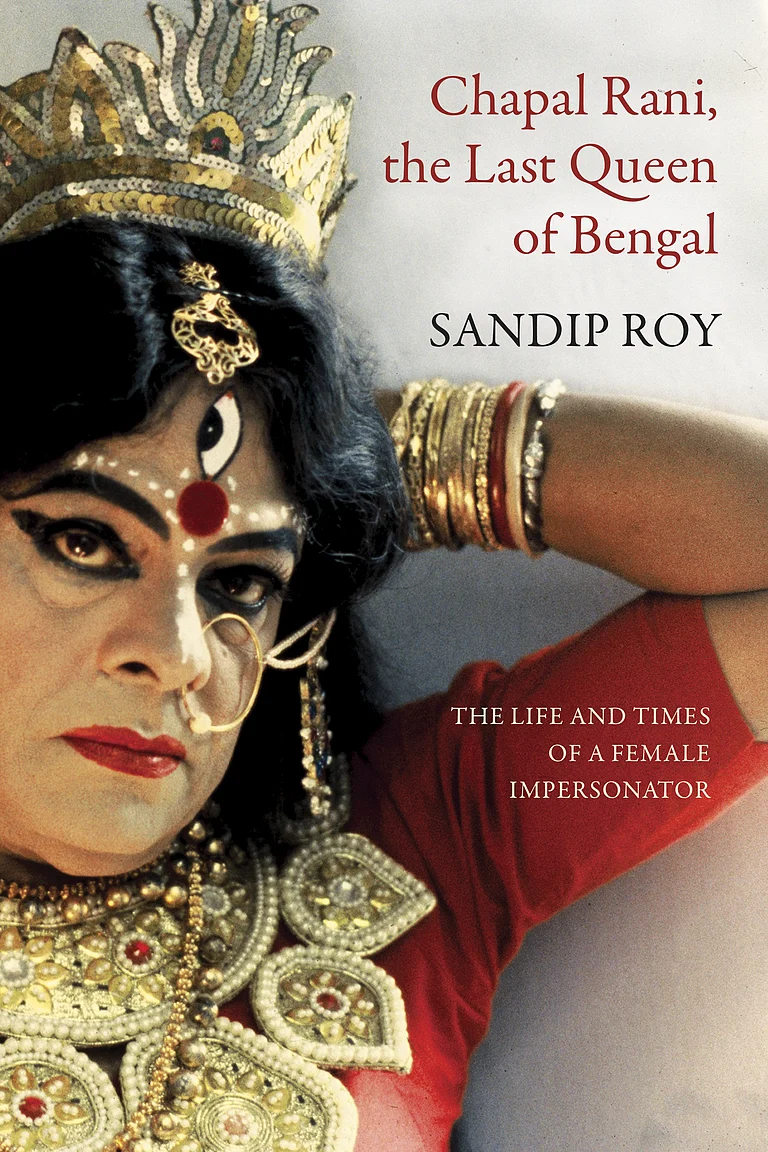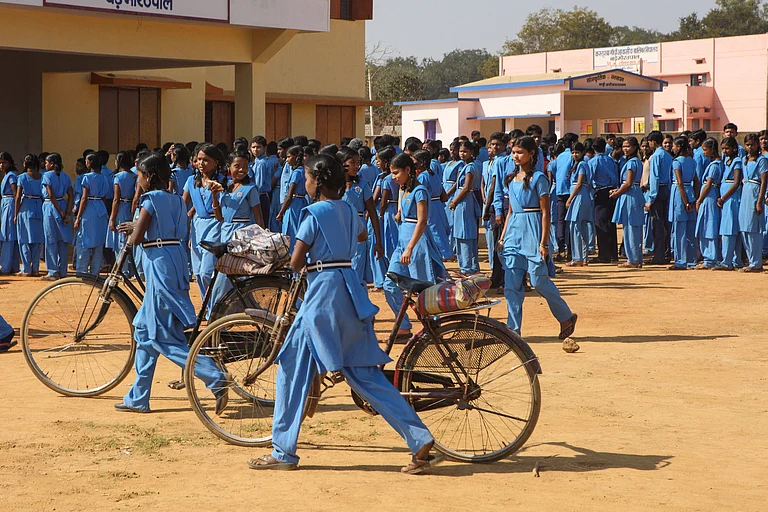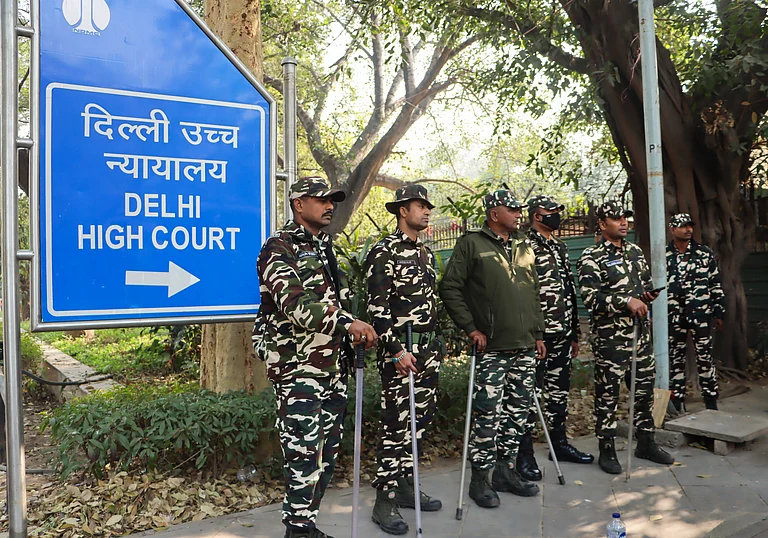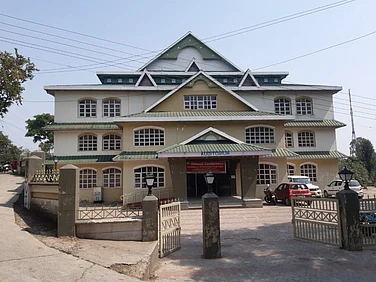Mumbai’s history can be told through the changes in its natural and built environment, and its pulse can be felt in moments of fevered crisis. As is well known, Mumbai’s current form emerged through the extensive production of land through the distortion of natural features. Almost a decade ago, a study by the Mumbai Transformation Support Unit (MTSU) detailed the “unprecedented loss of natural landscape due to land use change in favour of built-up area for urban use, created after eating up more than 50 per cent of Mumbai’s beaches, lakes, vegetated islets, hillocks, inter-tidal zones and mangroves”. The process of land creation for urban uses is baked into Mumbai’s DNA from colonial times, when the seven islands of Worli, Parel, Mahim, Mazagaon, Bombay, Little Colaba and Colaba were first linked. These changes in topography, in turn, can be linked to Mumbai’s contemporary ecological and climate crisis, as was evident in the floods that resulted from the torrential downpour on July 26, 2005.
Storm water drains and channels that normally carried rainwater to the sea, blocked by intense building activity during the previous decade, were widely believed to have caused the flooding that resulted in the loss of life and property at an unprecedented scale on 26/7. On the social level, however, the storm was handled with a sense of calm inevitability and even a sense of civility, with numerous stories of helping hands extended to people who were unable to return home to the outer suburbs until public transport was restored. Mumbai’s ‘spirit of resilience’ was celebrated in public discourse and contrasted favourably with the chaos that followed the devastation of Hurricane Katrina which struck the US city of New Orleans just a few weeks later.
In an odd way, the 26/7 floods brought the city together after more than a decade of divisive politics and suspicion, sparked by the riots that followed the demolition of the Babri Masjid in December 1992, which were followed by the serial bomb attacks in March 1993. The loss of the city’s cosmopolitan ethos was widely lamented in the public sphere and the decade that followed saw the unprecedented transformation of the city, physically and culturally. As the rubble of demolitions, riots and bombs slowly cleared, the entire city seemed to turn into a construction site. Throughout the 1990s and the first decade of the 21st century, the city expanded skywards as building heights increased dramatically, while simultaneously, urban territory extended noticeably with massive roadworks and other transport initiatives linking different parts of the city in new ways. The liberalisation of the Indian economy encouraged an influx of transnational corporations and brands along with foreign direct investment, opening new directions for urban expansion. But 26/7 was a wake-up call that sparked a civic movement, led by the Urban Design Research Institute, around the city’s Development Plan 2034, which is supposed to be revised by the municipal corporation every 20 years. The first of these plans was drawn up in 1964 and the second submitted to the state government for sanction in 1985.

In 1948, shortly after Partition and Independence, my grandfather migrated to the city then known as Bombay, along with thousands of other job-seekers and refugees. He found work in sales and marketing in the pharmaceutical industry, remaining close to his original desire to study medicine. My father and his siblings recall enjoying a carefree childhood, filled with trips to the beach, the cinema, and to Brabourne stadium for cricket matches. My grandfather was among the founders of the Andhra Maha Sabha of Bombay and the Andhra Education Society, promoting the language and culture of Andhra Pradesh in Bombay. Socialising with other Telugu families, they observed rituals and ceremonies familiar to them from their village past while cultivating cosmopolitan friendships at school and college. The siblings followed and found success in conventional bourgeois pathways as doctors, engineers, teachers and scholars. A love of learning and the arts guided them as a family and they seemed to lead charmed lives, untouched by the broader political conflicts brewing in the city and even the nation, at least in their own recollections.
My father sometimes recounted one moment of frisson, in the late 1960s, when he was questioned at an interview for the post of lecturer in Cardiology about the Krishna River water dispute between Maharashtra and Andhra Pradesh. But the frame of ethnic politics and the rise of anti-South Indian sentiments was studiously avoided in his narrative, which rather recalled the bounty of good fortune that the city had bestowed upon their family. The large family of seven siblings and a continuous stream of visitors from Andhra lived for a decade in a three-room flat in Dadar’s Parsi Colony neighbourhood, where they played in a garden next to their building and walked to schools that were in the shadow of the storied textile mills of Lalbaug and Parel, even while living in a world that was quite separate from working class life and its political culture.
Throughout the 20th century, the city’s political economy was significantly moulded by this textile industry, which employed approximately a quarter-of-a-million people, along with other manufacturing enterprises and the activities of the Bombay Port Trust and the Bombay Stock Exchange. Unionised and informal workers in the mills, white collar workers and merchants in the city’s share bazaars and commodities exchanges dominated the work ethos of the city, while its fabled film industry spun dreams for the entire nation. The city experienced several waves of migration, precipitated by various crises, among them Partition in 1947 and famine in 1972. Rental housing, while still widely available just after Independence to white collar workers like my grandfather and to the working classes in the fabled chawls of Bombay, started to become scarce as the rent control act stopped landlords from profiting through speculation on demand. The housing crisis that slowly seeped through the edges of the island-city started to manifest itself in the expansion of the Matunga labour camp into the Mahim creek, eventually growing into the multi-ethnic neighbourhood of Dharavi. Dharavi’s topography bears witness to successive waves of infill activities that produced a wildly hybrid landscape, where sometimes it is impossible to tell the difference between the natural and the man-made.
This growing housing crisis leading to self-built neighbourhoods such as Dharavi resulted in yet another restrictive policy measure—the Urban Land (Ceiling and Regulation) Act (ULCRA) in 1976, restricting the amount of land that could be owned by a single landowner. Those owning land in excess of 500 square metres were required to surrender the excess land to the government, seeking to create a land bank for the greater good of public housing. Complex structures of ownership abounded in the city where land was held, not only by individuals but also by community and religious trusts and by families who had been granted the land by the colonial administrators of Bombay to farm, fish and to carry on animal husbandry or dairy farming.
Added to this, residents in the city were rarely ‘full time’. Nomadism of various kinds prevailed, and permanence was rarely valued for itself. My grandparents regularly went back and forth to the other coast with their children for vacations and family occasions. Their working-class counterparts went back to their villages during the harvest seasons to visit their families, work the fields and observe religious ceremonies while spending the rest of the year working in the mills or other manufacturing jobs, living in dormitories and in communal housing, sometimes owned by village associations. Amid this ambiguity of settlement, housing cooperatives managed to purchase small plots of land to build low- and mid-rise apartment blocks throughout the expanding suburban periphery for ownership. In the early ’60s, my grandfather, now retired from his private sector job as the director of marketing for an American pharmaceutical company, decided to move his family into a bungalow on the north-eastern edge of the city, constructed by an Englishman in the waning years of the Empire. The bungalow, set in the middle of two free-hold plots, was surrounded by land owned by the Catholic parish of Chembur, sprinkled with now quaint looking cottages and single-family homes, some of which still stand, surviving the vagaries of weather and development.

This bungalow became the stage for the next generation of my grandfather’s family, born during the Cold War and the first generation to live with television sets, Doordarshan and a carefully curated menu of western media. The house itself, like an ageing actor, required an enormous amount of attention, repair and loving care as monsoons ravaged its concrete body. The bungalow’s garden of flowering bushes and fruit trees, lovingly transplanted from the family’s fertile east coast homeland somehow survived seasons of excessive wetness and extreme dryness when water was supplied only for a few hours a day and it was illegal to draw more than one’s allotted share, even to cultivate the thirsty garden. But if these were the travails of a privileged, bourgeois family during the ’70s and the ’80s, the struggles of newer migrants for housing, water and the goods of life—roti, kapda aur makaan, as the slogan of those times went—created a menacing atmosphere in the city.
A fateful decision taken by the city’s urban planners in the early 1980s to apply the brakes on urban expansion proved to be disastrous for the city. Despite the continuous migration into the city in the decades after Independence, especially during the 1970s due to famine in rural Maharashtra and other parts of southern India, urban authorities found that the only way to cope was to cap services and housing provision in the hopes that migrants would stop coming. The city’s second development plan (DP), which was to be sanctioned in 1984, planned for an extremely limited population size which was already exceeded by the time the DP was sanctioned in 1991, along with a revised set of Development Control Regulations (DCR). Without housing and services, a variety of arrangements arose for self-building and provisioning, sometimes in collaboration with the municipal government to bypass its own restrictions.
With the textile mills facing financial, labour and technological crises, their owners, like the landlords of rent-controlled buildings, chose to abandon rather than invest, shrouding the city in a deeper fog of despair and disrepair. Covert conversions of the mill land into spaces of leisure and entertainment precipitated the emergence of new forms of resistance from workers and new demands for security of livelihoods and urban residence. The Girni Kamgar Sangharsh Samiti (GKSS), led by the late Datta Iswalkar, was formed in the 1990s to voice the demands of workers who were now forced out of their secure jobs as the mills closed. In an interview with the writer in 2015, he recalled having to negotiate with strongmen who were employed by mill owners to protect their future real estate assets from workers who had once been the life of the district. Life was drained from the land before it could be converted into a medium of exchange.
These struggles were complemented by the emergence of various arrangements that carefully circumvented the bureaucracy of rent control and land ceiling regulations, leveraging ambiguities of ownership and title. Such housing strategies began to emerge even before mass social housing could be produced at the required scale by the Maharashtra Housing and Area Development Authority (MHADA), using the land seized under ULCRA provisions.
The last decade of the 20th century, which began with the liberalisation of the economy, punctured this depressed atmosphere, releasing an air of expectation created by the anticipated free movement of capital. Wealth accumulated illicitly over the decades after Independence turned to land as its preferred investment vehicle, merging into streams of foreign investments which also demanded space for operation in the city. In a bid to solve the housing crisis and cut through the Gordian Knot of its own regulations restricting building and development in the city, the newly-elected Sena government enacted the Slum Redevelopment Act (SRA) in 1995 to provide free housing to slum-dwellers who could prove that they resided in the city prior to 1995. With this policy, the state not only managed to promise free housing to the poorly-housed but also created a market for real estate and, more importantly, for “air rights” or development rights that are no longer tied to specific pieces of land but can ‘travel’ and land on construction sites far removed geographically from the plot of land to which they were originally tied. Urban development, which had previously been severely curtailed, began to flourish as real estate developers worked hard and competitively to find slums that they could resettle to gain access to land for market rate development.
For every free house constructed for an eligible slum-dweller, the developer received a bonus in the form of saleable square footage, a formula that effectively transferred land into the hands of the developer for the cost of construction. Redevelopment became a mantra that infected and affected almost every plot of buildable land in the city and its suburbs, generating hundreds of thousands of square feet of space for sale. Rent-controlled buildings in South Mumbai, working class chawls in Central Mumbai and suburban single-family homes or low-rise cooperative housing societies all became equal targets of the redevelopment frenzy that gripped the city in the first decade of the 21st century. Finance and real estate became inseparable.
My grandfather’s home, cared for by my father for more than thirty years after grandfather’s untimely passing, was one of the early homes to enter this emerging market. The dreams of owning a home that did not threaten to leak or collapse, that did not demand constant attention and repair perhaps veiled the risks of entering into an agreement with the developer, in whose hands the fate of our once and future home would rest. That dream came to a crashing end as my father died during the transaction, perhaps unable to hand over his home and his fate to the vagaries of the market that were already rearing their head even as the ink dried on the agreement. To cut a long story short, we would remain locked in a battle of wits with the developer to reclaim a small piece of the home that our grandfather bought in 1961, only this time not tied to the ground but bound to the sky as our home was demolished and morphed into the tallest building of a rather short neighbourhood.
In 2001, my mother moved into her new home with the help of a carpenter who fitted in the doors and windows that would help her secure her place in a building that kept on growing, loaded up with development rights that the builder managed to secure from the so-called slum TDR (Transferable Development Rights) market. An elderly neighbour from our bungalow days was the sole person on the street to object to the gigantic scale of the new tower, ironically named after my grandfather, sucking up the infrastructure meant for the entire street.
Within one century, my family, like countless others, went from a generation that grew up in a village to a high-rise redevelopment of a mid-century-built form. As Bombay morphed into Mumbai, it became difficult to tell whether its buildings were partially constructed or partially demolished. In another generation, even this air of perpetual incompleteness may dissipate. Although the ruination of the city is built into its fabric, there are also memories archived in the rubble. These memories persist through attempts to classify and homogenise relations between neighbours and between landscapes, between earth, sky and water even as the physiognomy and atmosphere of the city continue to alter each day in the delicate dance between restrictive and generative development regulations.
(This appeared in the print edition as "Mile-high Matchboxes")
(Views expressed are personal)
Vyjayanthi V. Rao is an anthropologist and a writer. She is one of the curators of the Lisbon Architecture triennale, 2022





















